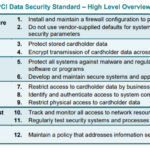In today’s digital age, antivirus software has become an essential tool in protecting our devices from harmful threats. However, there is a growing concern among users regarding false positives, where legitimate and safe programs are mistakenly flagged as threats. This could potentially lead to the deletion or blocking of important files and programs, causing unnecessary frustration and inconvenience. So, how can you ensure that your antivirus software is not falsely flagging safe programs?

Understanding False Positives
Definition of false positives
False positives refer to instances when antivirus software mistakenly identifies safe and legitimate programs or files as malware or threats. These false alarms can cause inconvenience and unnecessary panic for users, as well as undermine their trust in the antivirus software.
How false positives occur in antivirus software
False positives can occur due to various reasons, including the complex nature of antivirus algorithms and the ever-evolving landscape of malware. Antivirus software uses different techniques to identify threats, such as analyzing program behavior, using heuristics, and comparing against updated virus definitions. However, these methods are not foolproof and can sometimes result in false positives.
Implication of false positives on user’s trust and software utility
False positives have significant implications for both users and the overall effectiveness of antivirus software. When safe programs are flagged as threats, users may be deterred from using them or may incur unnecessary costs in seeking alternative solutions. Moreover, repeated false positives can erode the trust users have in their antivirus software, leading to a loss of confidence in the product’s ability to accurately detect real threats.
Common Reasons for False Positives
Analysis of program behavior
Antivirus software often analyzes the behavior of programs to assess their potential threat level. However, legitimate programs can sometimes exhibit behavior that resembles that of malware, leading to false positives. For example, programs that access sensitive system files or make changes to the operating system might trigger alarms, even if they are completely safe.
Heuristics based detection
Antivirus software uses heuristics, which are rule-based algorithms, to identify potential threats. These algorithms can sometimes make educated guesses about the nature of a program based on its code or behavior. However, this approach can also lead to false positives if the heuristics incorrectly classify a safe program as a threat.
Updated virus definitions
Virus definitions are a crucial component of antivirus software as they contain information about known malware. However, if the virus definitions are not regularly updated, the software may flag safe programs or files that resemble older malware signatures. This can result in false positives as the software mistakenly detects a benign file as a known threat.
Misinterpretation of safe programs as malware due to code similarities
Sometimes, safe programs can share certain code similarities with known malware, leading to a false positive identification. Antivirus software may use pattern matching techniques to detect malware, but if these patterns exist in legitimate programs as well, false positives can occur.
Changes in program or system configuration
Changes in program or system configurations can also trigger false positives. For example, an update to the operating system or a program may result in altered file signatures or behaviors that antivirus software interprets as potential threats. In such cases, false positives can occur until the antivirus software is updated to recognize the changes.
Unrecognized or less popular software
Less popular or niche software may not receive the same level of scrutiny from antivirus software developers. As a result, these programs may be more likely to trigger false positives as they are not adequately validated or included in virus definition databases. Users of lesser-known software may, therefore, encounter a higher incidence of false positives.
Insight into Antivirus Software Mechanics
Working of antivirus software
Antivirus software works by continuously monitoring and scanning files and programs on a user’s system to detect and eliminate potential threats. This is achieved through various techniques, including behavioral analysis, heuristic analysis, and the use of virus definitions.
Methods to detect viruses and malware
Antivirus software employs multiple methods to detect viruses and malware. Behavioral analysis involves monitoring program behavior to identify suspicious activities. Heuristic analysis focuses on identifying programs or files that display certain patterns or characteristics commonly found in malware. Additionally, virus definitions are regularly updated to include signatures of known malware, enabling the software to recognize and eliminate these threats.
Use of heuristics and behavioral analysis in threat detection
Heuristics and behavioral analysis play a vital role in threat detection. By analyzing program behavior, antivirus software can identify suspicious activities that may indicate malware. Heuristic analysis, on the other hand, allows the software to make educated guesses about program behavior based on code and other characteristics. However, these methods are not foolproof and can result in false positives.
Role of virus definitions in detecting threats
Virus definitions contain information about known malware or specific patterns associated with malware. When scanning files or programs, antivirus software compares them against these definitions to identify potential threats. Virus definitions are regularly updated to keep pace with emerging threats, ensuring that the software can reliably detect and remove the latest forms of malware.
Choosing the Right Antivirus Software
Reviews and user experiences of different antivirus software
When selecting antivirus software, it is essential to consider reviews and user experiences. Online platforms and communities provide valuable insights into the performance and effectiveness of various antivirus solutions. User reviews can shed light on the rate of false positives experienced by individuals, helping you make an informed decision.
Reputation and credibility of the software company
The reputation and credibility of the software company behind the antivirus product are crucial factors to consider. Established and reputable companies are likely to invest more in research and development, leading to a lower incidence of false positives. Additionally, well-known companies tend to have a more comprehensive virus definition database, improving the accuracy of their threat detection.
Rate of false positives in specific software
One important consideration when choosing antivirus software is the rate of false positives exhibited by the product. This information is usually available through user reviews or can be obtained by reaching out to the software company directly. Opting for software with a low false positive rate can help minimize inconveniences and unnecessary alarms.
Software compatibility with the user’s system
Compatibility between antivirus software and the user’s system is crucial for optimal performance. Before making a decision, it is important to ensure that the chosen antivirus software is compatible with your operating system and does not conflict with other security measures or software already installed on your computer. A suitable antivirus program should seamlessly integrate into your system without causing disruptions.
Whitelisting Safe Programs
Need for whitelisting safe programs
Whitelisting safe programs entails explicitly marking certain programs or files as trusted and exempt from security scans. This approach can be beneficial in reducing false positives, especially for programs or files that are regularly flagged despite being safe. By whitelisting these programs, users can ensure uninterrupted access without unnecessary alarm.
Process of whitelisting programs
The process of whitelisting programs may differ depending on the antivirus software being used. Typically, users can access the settings or preferences of their antivirus software and navigate to the exclusions or trust lists. From there, they can add the specific programs or files they wish to whitelist. It is important to follow the instructions provided by the antivirus software to ensure proper and effective whitelisting.
Precautions while whitelisting programs
While whitelisting safe programs can help reduce false positives, it is essential to exercise caution during this process. Only whitelist programs or files that are from trusted sources and have been thoroughly vetted for their safety. Additionally, periodically reviewing and updating the whitelist is important to ensure that programs or files remain safe and secure.
Impact of whitelisting on false positive rate
Whitelisting safe programs can significantly reduce the incidence of false positives. By exempting trusted programs from security scans, users can minimize alarms and false positives associated with those programs. However, it is important to strike a balance and not overly rely on whitelisting, as this may leave your system vulnerable to actual threats.
Understanding Software Development Practices
Role of software development practices in false positives
Software development practices play a crucial role in mitigating the occurrence of false positives in antivirus software. By adhering to industry best practices, including secure coding techniques and thorough testing procedures, developers can minimize the chances of false positives. Adequate quality assurance processes and robust scanning methodologies can lead to more accurate threat detection.
Impact of software signing on false positive rate
Software signing is the process of digitally signing software with a cryptographic signature to establish its authenticity and integrity. Signing software from reputable developers can significantly reduce the occurrence of false positives. Antivirus software often regards signed software as more trustworthy and less likely to be flagged as a threat.
Significance of secure development practices and threat detection
Secure development practices are essential for ensuring that software does not trigger false positives. By following secure coding principles, developers can structure their code in a way that reduces the likelihood of it being misconstrued as malicious by antivirus software. Thorough threat detection during the development process can identify and rectify any potential false positives before software is released to the public.
Interacting with Antivirus Software Developers
Need for communication with software developers
Interacting and communicating with antivirus software developers can be beneficial for users experiencing false positives. By reporting false positives and providing detailed information about the affected programs or files, users can assist developers in improving the accuracy of their software. Additionally, developers can address user concerns and provide guidance on settings or adjustments to reduce false positives.
How user reports can reduce false positives
User reports are invaluable for antivirus software developers in identifying and rectifying false positives. Detailed reports with information about the flagged program or file, system configurations, and any relevant error messages can help developers understand the root cause of false positives and work towards resolving them in future updates. User reports enable developers to fine-tune their algorithms and improve the overall performance of their software.
Developer responsibilities in handling false positives
Antivirus software developers have a responsibility to address and rectify false positives promptly. This involves analyzing user reports, investigating flagged programs or files, and releasing software updates that minimize the occurrence of false positives. Developers should also ensure clear communication channels are available for users to report false positives, providing them with a reliable means to address concerns and maintain user trust.
Involvement in Antivirus User Communities
Benefits of participating in user communities
Participating in antivirus user communities can provide several benefits for users concerned about false positives. These communities offer a platform for individuals to share their experiences and seek advice from fellow users who may have encountered similar false positives. The collective knowledge and support within these communities can help users navigate false positive issues effectively.
Sharing and learning from user experiences
Antivirus user communities facilitate the sharing of experiences related to false positives. By hearing about others’ encounters and strategies for resolving false positives, users can gain valuable insights and potential solutions. Learning from the experiences of others can empower users to make informed decisions and take appropriate actions when faced with false positives.
Influence of user communities on antivirus software development
User communities can have a significant influence on antivirus software development. Developers often monitor these communities to gather feedback, identify common issues, and understand user expectations. By actively participating in these communities, users can provide feedback that helps shape future updates and improvements, ultimately leading to a reduction in false positives.
Role of collective feedback in reducing false positives
Collective feedback from antivirus user communities plays a crucial role in reducing false positives. Users sharing their experiences and reporting false positives can contribute to the overall improvement of antivirus software. By highlighting patterns or trends in false positives, the collective feedback helps developers identify areas of improvement and develop more accurate threat detection algorithms.
Setting Custom Threat Detection Levels
Effect of threat detection levels on false positives
Threat detection levels determine the sensitivity of antivirus software to potential threats. Higher threat detection levels may result in a lower tolerance for potential threats, leading to fewer false negatives. However, this may also increase the risk of false positives. Conversely, lowering the threat detection levels may decrease the occurrence of false positives but increase the chance of false negatives.
Balancing system security and false positive rate
Finding the right balance between system security and the false positive rate is crucial when setting custom threat detection levels. Users must consider their specific needs, risk tolerance, and the importance of their data. It is advisable to start with a moderate threat detection level and adjust it gradually based on the frequency of false positives and the level of system security desired.
Methods to adjust threat detection levels
Antivirus software typically provides users with options to adjust threat detection levels. These settings are often located in the preferences or settings menu of the software. Users can fine-tune the sensitivity of the software by selecting options such as low, medium, or high threat detection levels. It is important to carefully understand the implications of each level and make adjustments based on individual requirements and preferences.
Periodic Updating of Antivirus Software
Need for periodic software updates
Periodic updates of antivirus software are essential for maintaining optimal performance and reducing the risk of false positives. Updates often include improvements to threat detection algorithms, bug fixes, and the addition of new virus definitions. By regularly updating their software, users can ensure that their antivirus solution is equipped to detect and eliminate the latest threats effectively.
Impact of outdated software on false positive rate
Using outdated antivirus software can increase the false positive rate and leave the system vulnerable to emerging threats. Outdated software may lack the necessary virus definitions or algorithm updates to accurately detect new malware. As a result, legitimate programs or files may be flagged as threats, significantly impacting the user’s experience and overall system security.
Automating software updates for optimal performance
To ensure regular updates, users can opt for antivirus software that supports automated updates. Enabling automatic updates ensures that the software remains up-to-date without requiring manual intervention. This minimizes the risk of overlooking updates and helps maintain optimal performance, reducing the potential for false positives caused by outdated software.







